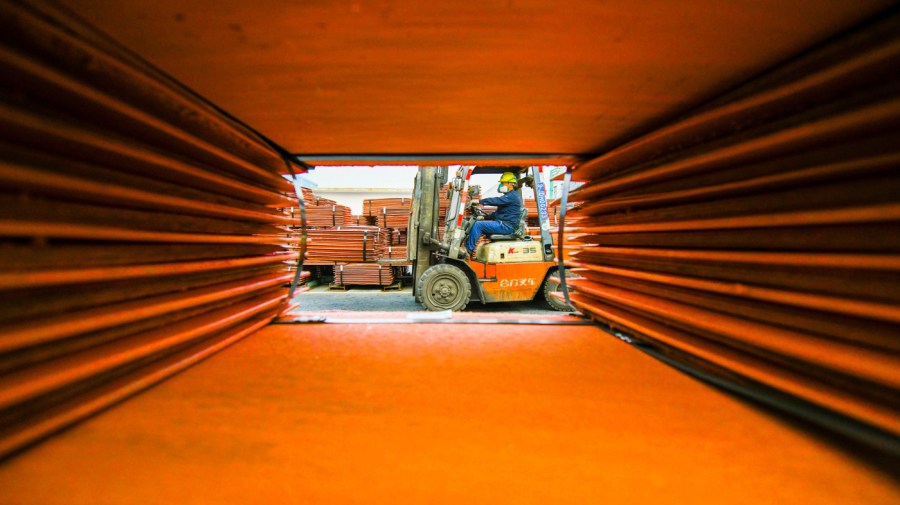
Last week, President Trump announced that he would impose tariffs on semiconductors, pharmaceuticals, steel, aluminum, oil and gas and copper by mid-February. Trump conceded that these tariffs could cause “some temporary, short-term disruption” but that “people will understand that.”
This is wishful thinking. The harm caused by these tariffs will not be “temporary” or “short-term,” and a recent poll shows that even voters who support tariffs are not willing to pay for them.
Of all the Trump tariffs, the one on copper may be the hardest to square with his narrative.
The U.S., like the rest of the world, has an insatiable appetite for copper. This critical mineral is key to cutting-edge technologies, such as the hardware and data centers that AI increasingly demands. Not surprisingly, global demand for copper is expected to surge by 75 percent by 2050.
Trump is right to target copper as a national priority, but he’s going about it the wrong way.
As he made clear on the campaign trail, Trump believes that tariffs can lead to a renaissance in U.S. manufacturing. His bet is that to get around a steep tariff wall, foreign and domestic investors will do business in America, rather than export from abroad. It won’t work, especially not for copper.
Like semiconductors and pharmaceuticals, copper is the product of a complex supply chain. The four key stages include mining, smelting and refining, semi-fabricating and manufacturing final goods. The U.S. has different challenges at each stage, but tariffs are not the solution to any of them.
First, there’s the problem of bringing a mine online. According to an S&P Global report, the U.S. ranks second last internationally in terms of required lead times (29 years), just ahead of Zambia (34 years). Permitting obstacles, particularly on federal land, and the high risk of litigation once the mine is up and running, set the U.S. apart from other countries.
These factors keep investors at bay, even though America’s endowment of copper is comparable to Canada’s and Australia’s combined.
The Interior Department’s Geological Survey notes that 17 of America’s 25 copper mines account for 99 percent of domestic output. Some of these mines aren’t at capacity and others have been shuttered.
New infrastructure and power contracts would help in this regard, not tariffs. Yet, more capacity would lay bare other problems for which the answer is free trade, not protectionism.
Second, the U.S. is home to just two primary smelters, one secondary smelter, and 17 refineries. As a study by Wood Mackenzie points out, these are the sectors in which America is absent and unlikely to catch up.
The study observes that there are no plans for smelters in North America or Europe — one in Georgia is slated to focus on scrap copper — and concludes that fully decoupling from China in these downstream activities “is unfeasible.” Indeed, China currently controls 97 percent of global smelting and refining capacity.
U.S. copper imports have risen from 10 percent of demand in 1995 to 50 percent today and are expected to increase to two-thirds by 2035. Half of these imports come from Canada, which would face the brunt of Trump’s tariffs, since other major exporters, like Chile, mainly sell to China. So this will hurt the U.S.
American business needs refined copper. Some 65,000 American workers, who tally for $77 billion in economic output, depend on Canadian imports. Just like in autos, the two countries share an integrated copper supply chain. Tariffs will only compound America’s home-grown mining woes.
In his press conference, Trump hinted that copper tariffs might not be rolled out with those on steel and aluminum, suggesting he wants more time to better calibrate them. It’s a fool’s errand.
The tariff rate that would be required to compensate for U.S. regulatory uncertainty and the risk of litigation would slow global growth and spur inflation in the U.S. In light of this, Trump’s proposed copper tariffs will put America last, not first.
Marc L. Busch is the Karl F. Landegger Professor of International Business Diplomacy at the Walsh School of Foreign Service, Georgetown University, and a global fellow at the Wilson Center’s Wahba Institute for Strategic Competition.











